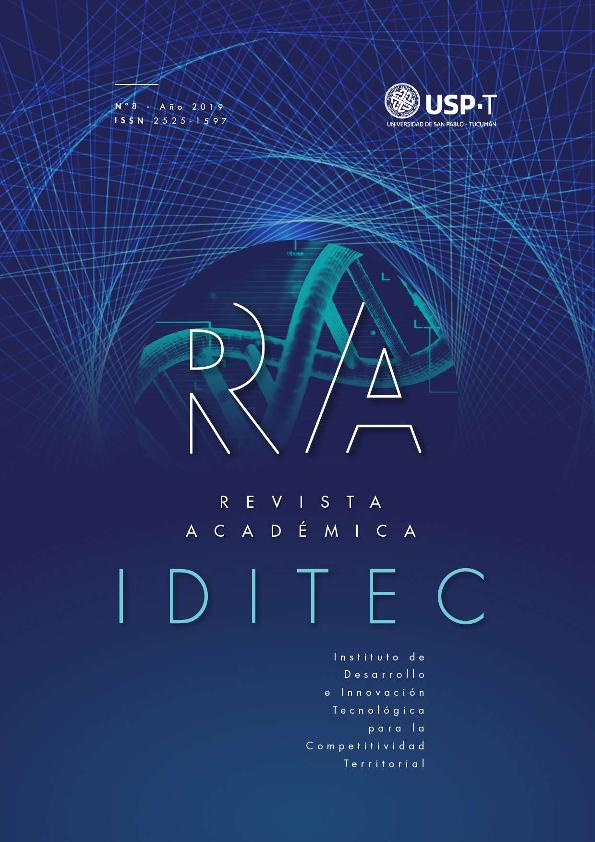Mostrar el registro sencillo del ítem
dc.contributor.author
Zarate, Gabriela del Valle

dc.contributor.author
Fara, María Agustina

dc.contributor.author
Sabater, Carlos
dc.contributor.author
Saez, Gabriel Dario

dc.contributor.author
Palacios, Jorge Martin

dc.contributor.author
Montilla, Antonia
dc.date.available
2020-02-11T14:37:32Z
dc.date.issued
2019-10
dc.identifier.citation
Zarate, Gabriela del Valle; Fara, María Agustina; Sabater, Carlos; Saez, Gabriel Dario; Palacios, Jorge Martin; et al.; Producción de galactooligosacáridos potencialmente prebióticos por bacterias grado alimentario; EDUSPT; IDITEC; 8; 10-2019; 3-17
dc.identifier.issn
2525-1597
dc.identifier.uri
http://hdl.handle.net/11336/97157
dc.description.abstract
Los prebióticos son ingredientes funcionales que estimulan el crecimiento y actividad de bacterias beneficiosas en el intestino mejorando indirectamente la salud de quien los consume. Entre estos compuestos, los carbohidratos no digeribles (CND), y en particular, los galactooligosacáridos (GOS) han recibido especial atención por sus propiedades biotecnológicas. Los GOS son sintetizados principalmente a partir de la lactosa por una reacción de transglicosilación catalizada por la enzima β-galactosidasa (βgal).La composición de sus monómeros y enlaces influye en su selectividad y bioactividad por lo que la selección de enzimas apropiadas para su síntesis resulta relevante. En el presente trabajo se evaluó la actividad β-gal de un panel de bacterias lácticas (BAL) y propionibacterias (PAB) de origen alimentario, a
los fines de seleccionar microorganismos con actividad transglicosilasa para la síntesis de GOS con potencial efecto prebiótico. La enzima fue extraída de los cultivos crecidos a expensas de lactosa (ELC) y su actividad hidrolítica fue evaluada mediante un método colorimétrico empleando ONPG como sustrato.
P. acidipropionici LET 120 y L. bulgaricus CRL 450 presentaron las mayores actividades específicas (2,55±0,15 y 1,07±0,13 U/mg, respectivamente) por lo que su enzima fue incubada con 300 g/L de lactosa a pH 6,5 y 45 °C durante 24 horas, cuantificando los oligosacáridos producidos por cromatografía líquida (HPLC-RID) y gaseosa (GC-FID). Diferentes condiciones ambientales (pH 5,0 a 7,0;40 a 60 ºC, 1 a 2,5 U/mL y 0,5 a 10,5 h de reacción) fueron evaluadas para optimizar la síntesis. La β-gal de L. bulgaricus CRL450 sintetizó 38,1- 48,4 % GOS y el doble de concentración de alolactosa y 3’galactosil-lactosa que la β-gal de P. acidipropionici LET120, mientras que ésta produjo 23,8-26.8 % de GOS, mayores
concentraciones de 6-galactobiosa y fue la única que sintetizó 4´galactosil-lactosa. Los GOS fueron purificados por adsorción en carbón activo y fermentación con levaduras y usados como fuente de carbono para el crecimiento de cepas probióticas para evaluar su potencial prebiótico. Los LET 120-GOS fueron
prebióticos para cepas intestinales de Bifidobacterium y Lactobacillus probióticas por lo que alientan el desarrollo de estudios más profundos sobre su caracterización estructural y su efecto fisiológico in vivo en el ecosistema intestinal.
dc.description.abstract
Prebiotics are functional ingredients that enhance the growth and activity of beneficial bacteria in the gut, improving in this way the consumer?s health. Among them, non-digestible carbohydrates (NDC) and particularly galactooligosaccharides (GOS) have received special attention due to their biotechnological properties. GOS are mainly synthesized from lactose by a tranglycosilation reaction catalyzed by the β-galactosidase (β-gal) enzyme. Their monomers composition and linkages have influence on their selectivity and bioactivity so that the selection of the suitable enzymes is relevant. In the present work, we assessed the β-gal activity of a panel of lactic acid bacteria (LAB) and propionibacteria (PAB) from food in order to select the microorganisms with tranglycosidase activity for the synthesis of GOS with potential prebiotic effects. With this aim, the enzymes were extracted from the cultures grown at expense of lactose (ELC) and their hydrolytic activity was quantified by a colorimetric method with ONPG as substrate. P. acidipropionici LET 120 y L. bulgaricus CRL 450 displayed the highest specific activities (2.55±0.15 y 1.07±0.13 U/mg, respectively) and their β-gal were incubated with 300 g/L of lactose at pH 6.5 and 45 °C for 24 h and the oligosaccharides produced were quantified by HPLC-RID and GC-FID. Different environmental conditions (pH 5.0 to 7.0; 40 to 60 ºC, 1 to 2.5 U/mL and 0.5 to 10.5 h of reaction) were tested in order to optimize the synthesis. β-gal of L. bulgaricus CRL 450 synthesized 38,1- 48,4 % GOS and the double allolactose and 3?galactosyl-lactose concentration than the β-gal of P. acidipropionici LET 120, whereas this enzyme produced 23.8-26.8 % of GOS, higher concentration of 6-galactobiose and was the only one that synthesized 4´galactosyl-lactose. GOS were purified by adsorption on active charcoal followed by yeasts fermentation and were then used as carbon source for the growth of probiotic strains for assessing their prebiotic activity. LET 120-GOS were prebiotic for intestinal Bifidobacterium y Lactobacillus probiotic strains which encourage further studies about their structural characterization and physiological effect in the complex gut ecosystem.
dc.format
application/pdf
dc.language.iso
spa
dc.publisher
EDUSPT
dc.rights
info:eu-repo/semantics/openAccess
dc.rights.uri
https://creativecommons.org/licenses/by-nc-sa/2.5/ar/
dc.subject
GALACTOOLIGOSACÁRIDOS
dc.subject
B-GALACTOSIDASA
dc.subject
PREBIOTICOS
dc.subject
PROBIÓTICOS
dc.subject.classification
Biología Celular, Microbiología

dc.subject.classification
Ciencias Biológicas

dc.subject.classification
CIENCIAS NATURALES Y EXACTAS

dc.title
Producción de galactooligosacáridos potencialmente prebióticos por bacterias grado alimentario
dc.title
Synthesis of potential prebiotic galactooligosaccharides by food grade bacteria
dc.type
info:eu-repo/semantics/article
dc.type
info:ar-repo/semantics/artículo
dc.type
info:eu-repo/semantics/publishedVersion
dc.date.updated
2019-12-11T20:12:04Z
dc.journal.volume
8
dc.journal.pagination
3-17
dc.journal.pais
Argentina

dc.journal.ciudad
San Pablo
dc.description.fil
Fil: Zarate, Gabriela del Valle. Consejo Nacional de Investigaciones Científicas y Técnicas. Centro Científico Tecnológico Conicet - Tucumán. Centro de Referencia para Lactobacilos; Argentina. Universidad de San Pablo T; Argentina
dc.description.fil
Fil: Fara, María Agustina. Consejo Nacional de Investigaciones Científicas y Técnicas. Centro Científico Tecnológico Conicet - Tucumán. Centro de Referencia para Lactobacilos; Argentina
dc.description.fil
Fil: Sabater, Carlos. Consejo Superior de Investigaciones Científicas. Instituto de Investigación en Ciencias de la Alimentación; España
dc.description.fil
Fil: Saez, Gabriel Dario. Consejo Nacional de Investigaciones Científicas y Técnicas. Centro Científico Tecnológico Conicet - Tucumán. Centro de Referencia para Lactobacilos; Argentina. Universidad de San Pablo T; Argentina
dc.description.fil
Fil: Palacios, Jorge Martin. Consejo Nacional de Investigaciones Científicas y Técnicas. Centro Científico Tecnológico Conicet - Tucumán. Centro de Referencia para Lactobacilos; Argentina
dc.description.fil
Fil: Montilla, Antonia. Consejo Superior de Investigaciones Científicas. Instituto de Investigación en Ciencias de la Alimentación; España
dc.journal.title
IDITEC
dc.relation.alternativeid
info:eu-repo/semantics/altIdentifier/url/https://uspt.edu.ar/web/wp-content/uploads/2019/10/IDITEC-2019.pdf
Archivos asociados
